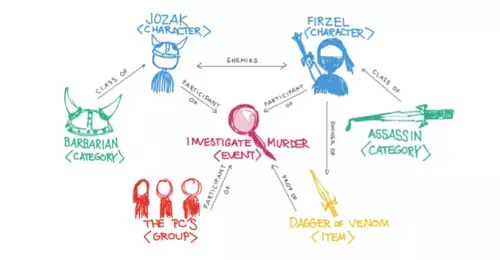Character Bible for Writers
A tool for writers to keep track of their world
By Richard Langley
Creating well-rounded characters is fundamental to any writing project. There are a number of tools and strategies available to assist with this. Initially, these encompass vital statistics, appearance and character traits.
Building on these, it is helpful to think about less tangible elements of your characters such as motivations, flaws, emotional quirks and dialect. Physical mannerisms whether it be their gait or a particular gesture/habit can also be worth building in.
Thus far, the process of creating a fictional character for writing differs little from that of building a character for a Role Playing (RP) game. As a writing project grows, so do the details around the character’s journey and interactions that the author needs to keep track of to maintain continuity and consistency. Similarly, as the author’s world expands so do characters’ relationships with each location and the people within it.
All these details form the Character Bible. A point of reference (using whatever system the author prefers) to keep track of their character and to evolve and build that character’s journey. Detail and consistency makes for good writing but it can be a task that takes time away from producing text. On Scabard, the “Characters” function fulfils the role of Character Bible very efficiently.

Character Connections
A key component of your character bible are the connections that your character forms between other elements of your fictional world. Connections can be relationships, interactions or the history your character shares throughout your story. This can also encompass their back story.
Examples might include: family members, friends, allies, mentors, contacts, and agents as well as key antagonists. You can include locations where the character has been, has friends or enemies, where they were born, raised or where they received training. You can think about how a character responds to deities, organizations and significant items as part of this process.
Creating a Character Bible on Scabard
If you fancy giving a character bible a try for your project, the core features needed for a writer are available within Scabard’s free membership. You can very quickly expand a character page into a web of connected information using Scabard's connections feature. You can export pages from Scabard to markdown easily and thence to Scrivener or a similar writing tool from Scabard's Printable feature.
As you build your notes for characters, world and plot, it is probably worth looking at one of the membership packages to allow you additional space and some of the more advanced features.
The first tier, “Hero” ($5.95 per month) has the important feature of making everything private except for other chosen users of Scabard. Once you are past the early stages, you may wish to keep your material private - particularly if you are looking to publish in the future. After publication, you can clone much of this and create a publicly viewable “wiki” to share with your readers.
“Legend” subscription ($10.95 per month) has features such as family tree and additional functionality around maps which could prove useful for a complex world creation. You also have an audit feature, highlighting any gaps in your planning and the “Idea Prompt” which suggests plot twists and plot hooks around many of the most common connections.
Ordering this information so that it is useful to you is as important as creating the character bible in the first place. You can choose to visually represent it with a spider diagram or similar graphic. Color coding (for example small colored blocks along one edge of the page) can be another way to visually indicate links between bits of information. To be useful, the character bible needs enough detail for you to reference without it becoming the focus of your creative effort (to the detriment of your writing).
Scabard allows you to “build in” all these links as you create them and there are several easy ways to move between links or see them represented in an interactive graphic.
Is it worth creating a Character Bible?
It can seem like a lot of work and a writer’s time is limited (as is their creativity). Investing in such detailed background notes can feel a little like procrastination. Most writers would make some form of notes at an early stage, if only to help visualise their main characters and their core attributes. This can be the start of your character bible.
For the rest, add to it as you write. It isn’t something that takes the place of creative plot writing but rather one that documents it organically. When you write a new bit of back-story or some key element of your character’s journey, pop a brief note into the character bible. This allows you to quickly reference in the future.
This is particularly useful where you might be writing more than one story or if you simply don’t get to write that often. It can be difficult to avoid inconsistencies when the writing process happens over an extended period.
If you are fortunate enough to develop a keen fanbase for your work, “canon” is a buzzword you can’t afford to ignore! Readers and fans can engage very closely with characters and worlds. They can be hungry for detail and will spot continuity errors. Your character bible will allow you to maintain an accurate and consistent approach in your writing.
Character-led Plot
An additional benefit to this approach is that often ideas for developing both your plot and your character can stem from the investment in a character bible. Explore their connections and motivations for possible plot twists or development opportunities. What might be their reaction to betrayal by a trusted ally? How would returning to somewhere from their childhood affect them? How might the antagonist exploit what they know of your character to manipulate them?
Having a visual reference is a great way to explore plot options whilst keeping the character and their journey central to your writing.
Author Bio
Richard Langley is the author of Storm on the Cathe. He's using Scabard as a Character Bible for his upcoming novel.

